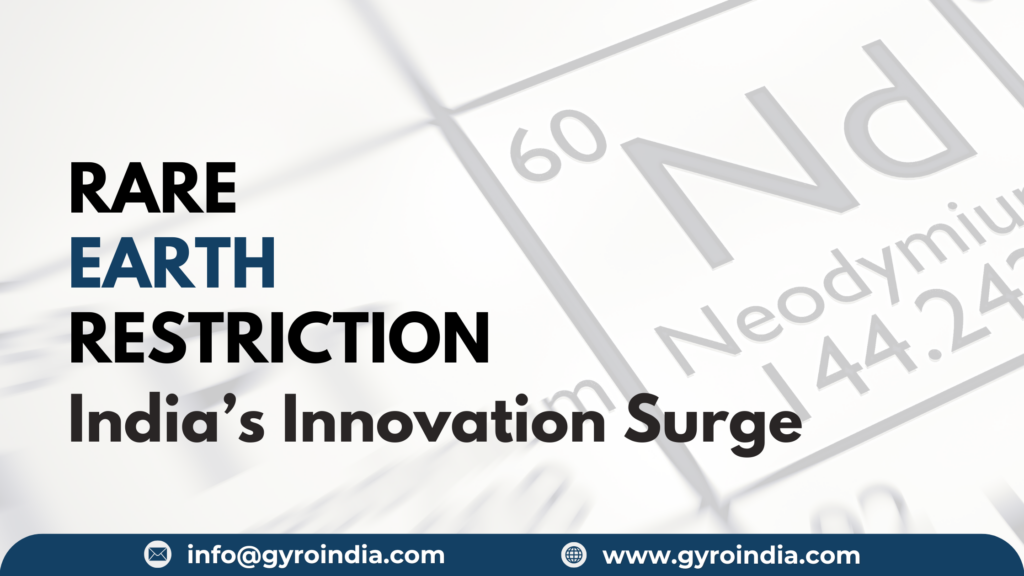 China’s recent clampdown on rare earth exports effective April 2025 – has sent shockwaves through India’s industrial sectors, particularly for industries reliant on permanent magnet motors. Rare earth magnets, like neodymium-based ones, are the backbone of high-efficiency motors in EVs, HVAC systems, and pumps. With China demanding stringent end-user certifications and India’s EV ambitions at stake, manufacturers are scrambling for alternatives. For industrial engineers and plant managers, this isn’t just a supply chain hiccup-it’s a wake-up call to rethink motor technology.
China’s recent clampdown on rare earth exports effective April 2025 – has sent shockwaves through India’s industrial sectors, particularly for industries reliant on permanent magnet motors. Rare earth magnets, like neodymium-based ones, are the backbone of high-efficiency motors in EVs, HVAC systems, and pumps. With China demanding stringent end-user certifications and India’s EV ambitions at stake, manufacturers are scrambling for alternatives. For industrial engineers and plant managers, this isn’t just a supply chain hiccup-it’s a wake-up call to rethink motor technology.
Magnet-Free Motors: Innovation
Enter magnet-free motors, a game-changer for industries seeking to bypass rare earth dependency. Take inductive-excited synchronous motors, which replace rare earth magnets with an inductive exciter embedded in the rotor shaft. These motors achieve power density comparable to traditional designs while slashing CO₂ emissions by 50% during production. Testing phases reveal 15% lower energy transmission losses and a compact design, saving up to 90mm in axial space-ideal for space-constrained applications like HVAC systems. Similarly, aluminum-wound motors leverage lightweight windings, cutting material costs by 41% and delivering 92% operational efficiency. For water treatment facilities and OEM pump manufacturers, these innovations mean lighter, cheaper motors without sacrificing performance.
Technological Upgrades: Building a Rare Earth-Resilient Future
Switching to magnet-free tech isn’t just about dodging supply chain chaos-it’s about future-proofing industrial operations. Two standout solutions are switched reluctance motors (SRMs) and externally excited synchronous motors (EESMs), both eliminating rare earth dependency while delivering robust performance.
Switched Reluctance Motors (SRMs): Simplicity Meets Durability
SRMs magnets free and rotor windings entirely, relying on magnetic reluctance principles. Their stator-focused design minimizes moving parts, slashing manufacturing costs by 15–20% compared to permanent magnet motors. With torque densities rivaling traditional designs, SRMs excel in harsh environments (e.g., HVAC compressors or industrial pumps) due to their tolerance to high temperatures and contaminants. Testing shows 92–94% efficiency at partial loads, ideal for variable-speed applications like water treatment plants.
Externally Excited Synchronous Motors (EESMs): Precision Without Magnets
EESMs replace permanent magnets with rotor windings energized by an external power source. This allows precise control over magnetic fields, optimizing efficiency across speed ranges- 5–8% energy savings in dynamic industrial loads. For instance, inductive-excited variants transmit energy via contactless exciters, cutting transmission losses by 15% and reducing production CO₂ by 50%. With stator temperatures 20–30°C cooler than conventional motors, maintenance intervals stretch, and lifespan increases by 15%.
Performance Optimization: Tweaks for Peak Efficiency
Maximize these motors by pairing them with variable speed drives (VSDs) for precise control. For example, externally excited synchronous motors coupled with silicon carbide-based VSDs boost efficiency by 3-5% in HVAC systems. Regular thermal imaging checks on stator windings can preempt failure, while oil-cooling systems maintain optimal temps even under heavy loads. Pro tip: Use torque mapping to align motor performance with operational demand, squeezing out every watt of savings.
The Bottom Line
China’s rare earth restrictions aren’t a roadblock-they’re a detour toward smarter, sustainable motor technology. From inductive-excited systems to aluminum windings and reluctance-based designs, the shift to magnet-free solutions offers higher efficiency, lower TCO, and zero supply chain drama. For India’s industrial leaders, this isn’t just an upgrade-it’s a strategic leap into a future where innovation outshines dependency. The future of manufacturing isn’t just bright-it’s magnetic (minus the magnets).
 China’s recent clampdown on rare earth exports effective April 2025 – has sent shockwaves through India’s industrial sectors, particularly for industries reliant on permanent magnet motors. Rare earth magnets, like neodymium-based ones, are the backbone of high-efficiency motors in EVs, HVAC systems, and pumps. With China demanding stringent end-user certifications and India’s EV ambitions at stake, manufacturers are scrambling for alternatives. For industrial engineers and plant managers, this isn’t just a supply chain hiccup-it’s a wake-up call to rethink motor technology.
China’s recent clampdown on rare earth exports effective April 2025 – has sent shockwaves through India’s industrial sectors, particularly for industries reliant on permanent magnet motors. Rare earth magnets, like neodymium-based ones, are the backbone of high-efficiency motors in EVs, HVAC systems, and pumps. With China demanding stringent end-user certifications and India’s EV ambitions at stake, manufacturers are scrambling for alternatives. For industrial engineers and plant managers, this isn’t just a supply chain hiccup-it’s a wake-up call to rethink motor technology.
Leave a Reply